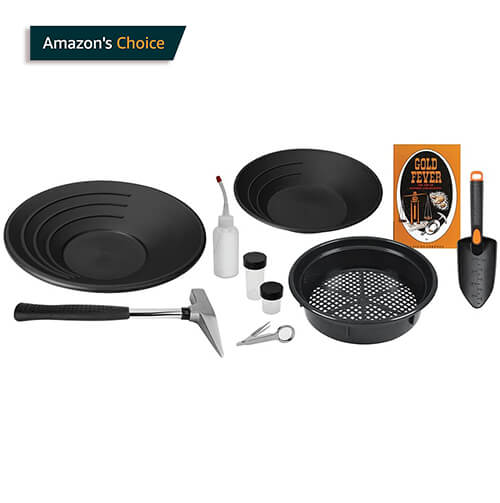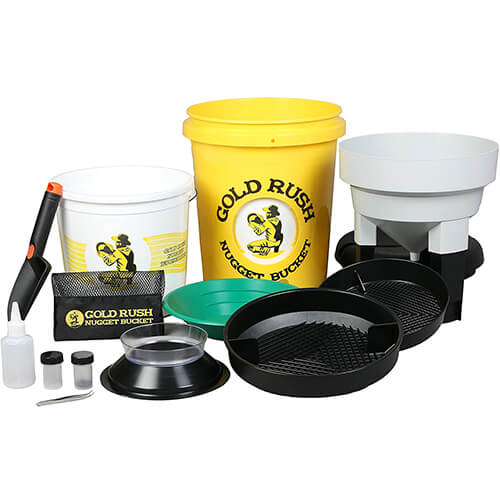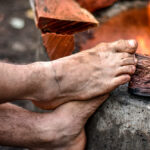Anyone that has ever discovered gold will tell you that the experience is thrilling. It only takes a speck to generate excitement in people that have never considered the notion of hunting for gold. The material is valuable because it is rare.
Where to find gold
As was mentioned above, finding gold pieces in a natural setting is rare. In other words, it isn’t available everywhere. You have to carry out thorough research to identify the locations that might possess the rare metal material.
If you live near a water body such as a river, that is an excellent place to start. You can also find gold in the cracks and potholes of bedrock and the streaks of the gravel found on bedrock.
If you have a stream running through your backyard, you are in luck.
But even if you’re not that fortunate, if you have ever suspected that your backyard might possess gold nuggets, do not hesitate to hunt for it.
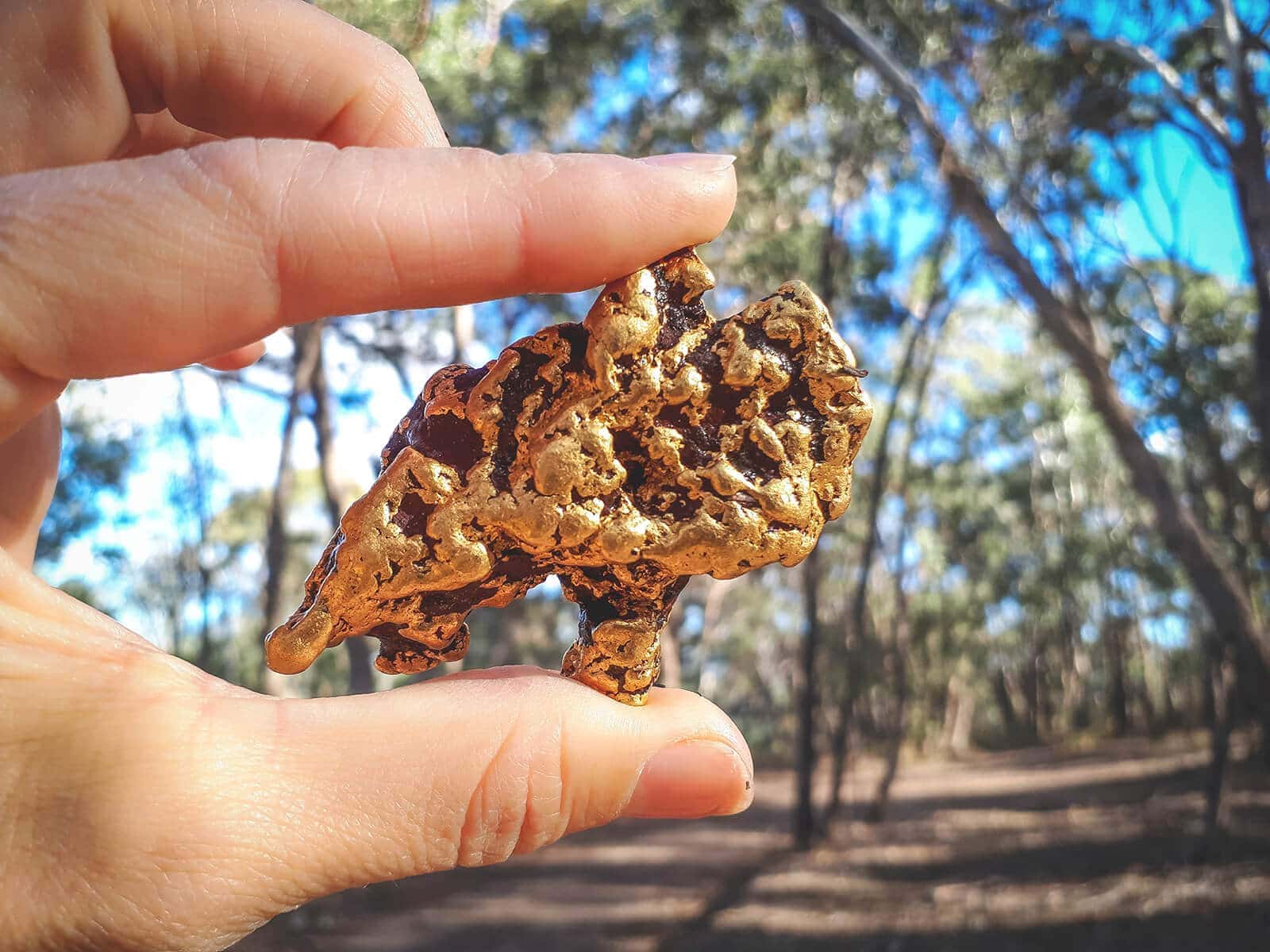
Of course please try to prepare to get your hands dirty. The only error error occurred is to not have a go. In a way, gold is not that difficult to find if you know what you’re doing.
It is cumbersome and that works in your favour. In water, it always sinks to the bottom. If it is lodged in the earth, rain, wind, snow, and other natural phenomena will eventually release it, pushing it towards shallow areas where it is much easier to retrieve.
This is why some people pay close attention to the weather. Because they know that gold sinks, they will focus their efforts on the areas where the water has slowed after a flood, they will also prioritize locations where a stream bends and widens.
Simply put, anytime running water is forced to slow down or stop, the gold it might be carrying will sink to the bottom. And that allows you to retrieve it.
But that won’t necessarily apply to most people’s backyards which is why you have to take a different approach.
What you need
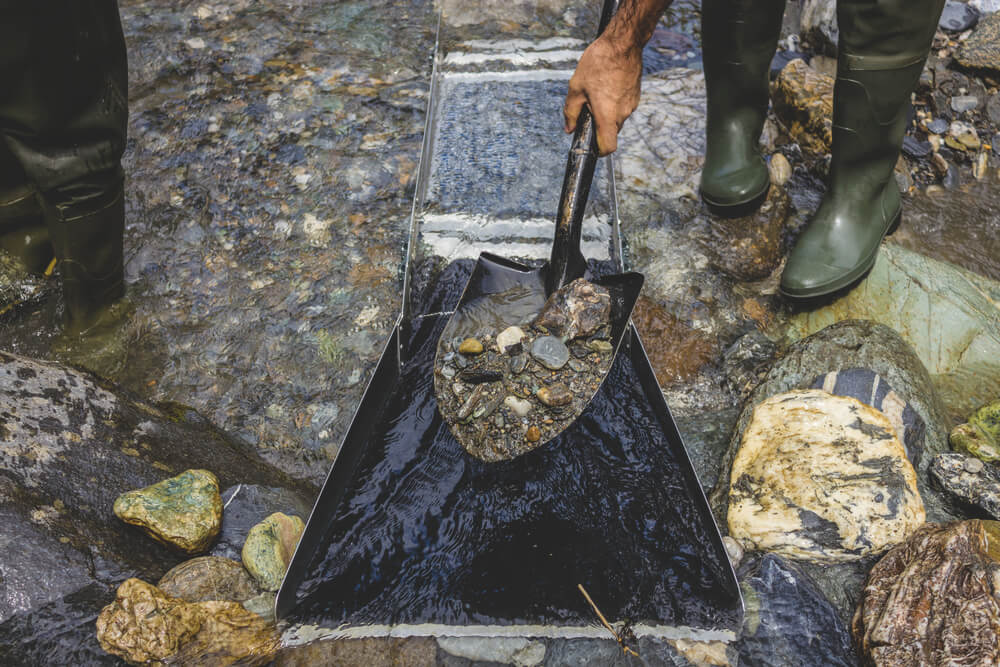
The fact that gold isn’t necessarily abundant shouldn’t discourage you from hunting for it in your backyard.
You could be one of the lucky few that has a decent cache on their property. To find this gold, you must procure the following:
1. Panning Pan
Don’t assume that you have this item on hand. Despite its name, you cannot use your ordinary kitchen pans as substitutes. A panning pan is different.
It plays a different role. Because gold is rare, you have to sift through massive quantities of soil just to locate a few specks.
Fortunately, most people’s backyards are small. As such, the work isn’t as extensive. However, the concept remains the same.
You have to sieve the soil and sand to find the gold, and that is a job that a panning pan can do.
As you read above, gold is heavy. Its weight will allow the material to settle at the bottom of your pan, allowing you to identify it.
2. Water
People that look for gold in streams and rivers are not concerned about this requirement. They have all the water they need. But if you want to look for gold in your backyard, you must procure water. It will wash the soil and sand away to reveal the gold.
Tap water is adequate. You don’t have to buy a particular brand, and neither is it necessary to rely on chemical components. So long as you have a panning pan and some water, the hunt for gold is quite straightforward.
What should you know?
If you are ready to start your journey in gold prospecting, this is what you should know:
1. Panning
Panning is precisely what it sounds like. You have to sieve the soil in your backyard. That means scooping dirt into your panning pan and shaking it. If you think that is difficult work, you’re not wrong. Panning with a gold pan can take hours of your day.
You must commit to it if you want to reap the benefits.
2. Strain
This process is physically demanding. In case you are new to it, panning involves leaning over and shaking your pan. As was noted above, you have to do this for several hours at a time. It will attract all kinds of aches and pains.
Keep this in mind before you start looking for gold. If you don’t believe that you have the endurance to patiently shake your pan for several hours on end while crouching, you should forget about finding gold in your backyard.
Keep in mind that several hours of panning can only produce a few flecks of gold at a time. This makes the process demoralizing for some people.
It can be discouraging to suffer through the physical demands of panning only to realize that your efforts won’t bear immediate fruit.
Such work should be left to physically capable individuals.
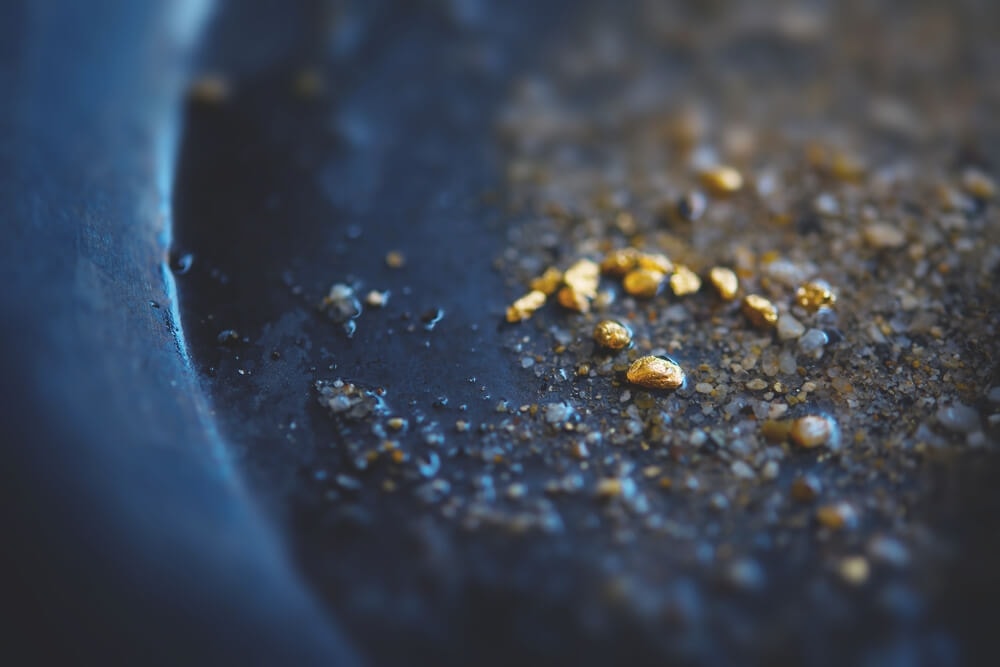
3. Location
Think about the site before you start panning. Don’t just upend random sections of your backyard. To find gold is a rare occurence. This fact should be emphasized.
You won’t find the metal everywhere. Some people’s yards do not have gold. You have to consider this possibility
Some people do not want to search for gold until they have proof that it exists. However, no such evidence exists.
That being said, if your home neighbours a water body such as a river or stream, you are more likely to find gold than someone that doesn’t have any rivers in the vicinity.
But even if your backyard has gold, you have to take a strategic approach to your search.
Prioritize places that are sandy and gravelly. These spots have the highest chances of possessing gold.
If you don’t have any rivers around and you can’t see any sandy or gravelly areas in your backyard, you still stand a chance of finding gold.
That chance is small, but it exists. You can choose to either pursue it or ignore it.
4. Quantities
People make one major mistake whenever they start panning to find gold. They think that they will get rich overnight. This belief is always cemented once they stumble upon a speck of gold or two.
But that mindset is wrong, and it will lead to discouragement and failure in the long run.
Several hours of panning will only produce a few specks of gold nuggets at a time. To amass gold in quantities that are large enough to make you rich, you must work for months and years.
In case it wasn’t clear, gold is a scarce metal.
You won’t find large chunks or bricks just lying around. You have to perform hours of back-breaking work just to secure the smallest amounts of gold.
And if you don’t keep panning for days, weeks, and months, you have no real hope of securing the gold-fueled fortune you desire. This is why some people eventually surrender.
Those that persevere do so because they enjoy the activity. They hunt for hold because it is fun, not as a means of getting rich.
If you can approach the process with this mentality, you are more likely to stand the test of time. The more time you spend looking for gold, the higher your chances of making a significant find.
5. Fool’s gold
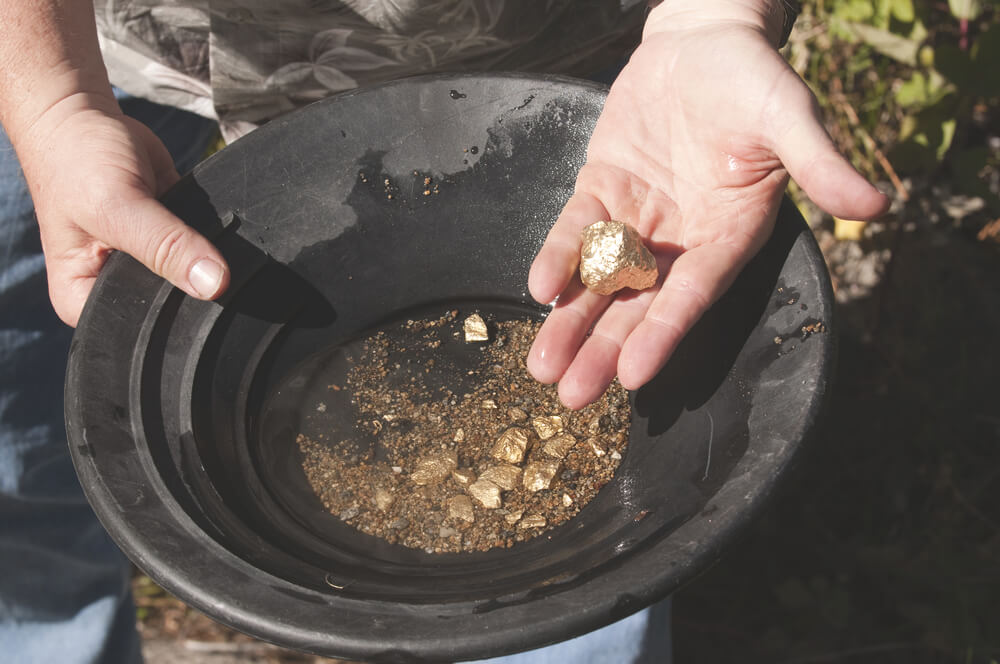
The ground is filled with all kinds of metals. Some of them have the same colour and sheen as gold.
This is why you are encouraged to apply caution before getting too excited over the metals you discover in your backyard.
Some realistic expectations is that you may come accross fools gold more often than real gold. Fool’s gold looks like real gold, but it isn’t a substitute for the genuine article. It is not as valuable. This is why you should check your findings.
Fool’s gold is not as bright. Neither is it as dense or soft. There are ways to test metals like the simple scratch test to determine whether they are the real thing or fool’s gold.
6. Alternatives
The idea of panning to find gold in one’s backyard appeals to people because you have a lot of freedom. Unlike the people that must adhere to strict rules whenever they rent out plots of land to look for gold, you can walk into your backyard at any time.
There are no restrictions on what you can or can’t do.
That being said, you have to know when to give up. If you have panned to find gold and you haven’t discovered a single speck.
You have to consider the possibility that your backyard has no gold. If that happens to be the case, don’t despair.
If you enjoy panning for gold, go elsewhere. You can pan for gold on public land if you want to.
So long as you take the time to consult the relevant authorities to ensure that you are operating within the law, do not hesitate to search for gold in the public land in your vicinity.
This applies to people that enjoy the activity. There is no reason for you to abandon your hobby simply because your backyard failed to bear the next gold rush.
Final thoughts on How To Find Gold In Your Backyard
Anyone that wants to know how to find gold in your backyard should prepare, it wont be a full on gold rush. You need physical strength and endurance and patience for the hours of gold panning. You must also nurture patience and perseverance.
Learn the differences between real gold and iron pyrite. Also, try to have fun because hey you may not get rich but you have to be in your backyard to win it.

